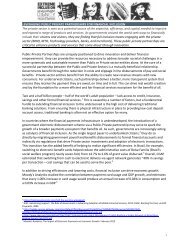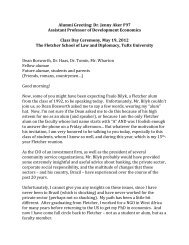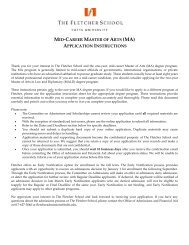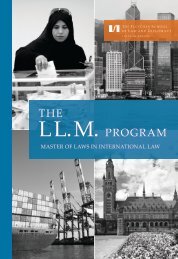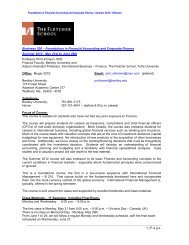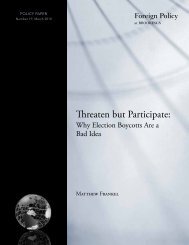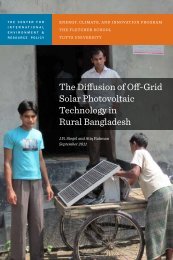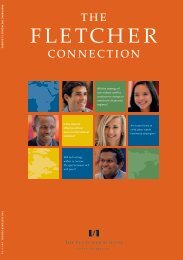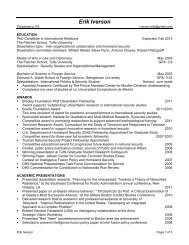A Case Study Analysis - Fletcher School of Law and Diplomacy
A Case Study Analysis - Fletcher School of Law and Diplomacy
A Case Study Analysis - Fletcher School of Law and Diplomacy
You also want an ePaper? Increase the reach of your titles
YUMPU automatically turns print PDFs into web optimized ePapers that Google loves.
8model; one possibility is that Chile was a used as a model because both countries are major copperexporters.The Human Development Fund, established in 2009, replaced the Mongolian Development Fund. Itsexact origin is uncertain, but from its founding the fund has had a domestic investment focus, differentfrom either <strong>of</strong> the funds suggested by the IMF. However, shortly after the fund’s founding, it was used asa mechanism for cash distribution <strong>and</strong> untargeted social spending (Ognon 2013). Cash distribution hadthe potential to exacerbate one <strong>of</strong> the problem the fund was envisioned to address: the overheating <strong>of</strong>Mongolia’s economy. Outside observers such as the World Bank were especially critical <strong>of</strong> the fund,which served as an instrument for politicians to fulfill election promises <strong>of</strong> cash h<strong>and</strong>outs to citizens,rather than to accomplish the policy aims the IMF had initially envisioned.The law establishing the Fiscal Stability Fund, first proposed in 2008, passed in 2010, <strong>and</strong> the fund nowholds approximately $300 million, according to a recent presentation by the Mongolian Ministry <strong>of</strong>Finance (Ognon 2013). A funding formula based on a reference price <strong>of</strong> copper was suggested, but notimmediately implemented. The value <strong>of</strong> the fund is expected to begin to increase rapidly in early 2013,when production at an enormous copper <strong>and</strong> gold mine, Oyu Tolgoi, is expected to begin. Mineralroyalties account for over 30% <strong>of</strong> the government’s revenues, <strong>and</strong> will increase further once Oyu Tolgoicomes online. Based on a study conducted by the Ministry <strong>of</strong> Finance with support from the World Bank,the Central Bank will manage the fund until assets reach 10% <strong>of</strong> GDP (Ognon 2013). Funds in excess <strong>of</strong>that amount will be managed jointly by the Central Bank <strong>and</strong> Ministry <strong>of</strong> Finance for long-term financialreturn (Ognon 2013).Bureaucratic <strong>and</strong> organizational challenges have also hindered the implementation <strong>and</strong> effectiveness <strong>of</strong>the new SWFs. The long-term fund has not yet been established, <strong>and</strong> “it’s clear the Minister <strong>of</strong> Financehas not read the [World Bank consultant’s] report”, nor does there appear to be a political consensusbehind establishing the long-term fund. While some <strong>of</strong>ficials within the government are now fully aware<strong>of</strong> the fund’s potential objective <strong>and</strong> strategy, Mongolian news agency Montsame quoted the PrimeMinister supporting a policy <strong>of</strong> cash h<strong>and</strong>outs from the SWF to generate jobs <strong>and</strong> income. The CentralBank is tasked with administering the FSF, but has only a minimal capacity to do so because it lackspr<strong>of</strong>essional staff with investment management experience. Since the fund’s founding, all assets havebeen held in cash because investment processes have not yet been established.The Central Bank is a member <strong>of</strong> the World Bank’s Reserve Asset Management Program (RAMP).RAMP is an advisory <strong>and</strong> management program <strong>of</strong> the World Bank Treasury that assists <strong>of</strong>ficialinstitutions such as central banks, pension funds <strong>and</strong> commodity funds. RAMP assists members through



